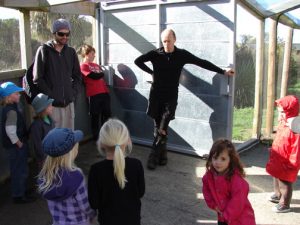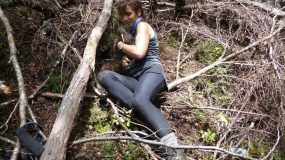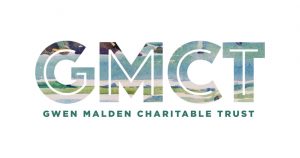The Environment, Conservation and Outdoor Education Trust (ECOED), under the leadership of Al Bramley, was formed in 2002 with the aim of reversing the decline in our local kiwi population.
ECOED set up a group of dedicated volunteers who worked together to form the Save Our Kiwi Hawke’s Bay project. Over time, it became one of ECOED’s principal efforts, and is now called Save Our Kaweka Kiwi.
ECOED, with recommendations from kiwi expert Dr John McLennan, had its main areas of focus on:
- building a core population of kiwi in Kaweka Forest Park and
- raising Operation Nest Egg chicks in a pest-proof kiwi crèche
Wild Kaweka kiwi were caught and fitted with transmitters. Eggs were retrieved from wild nests, then taken to Kiwi Encounter in Rotorua to be incubated. The resulting chicks were raised in pens until they were deemed stoat-proof – weighing about 1000g – then released back into the wild.
Construction of the kiwi crèche
In 2008, construction of the 40-hectare kiwi crèche at Lake Opouahi Scenic Reserve was completed. This, along with advancements in transmitter technology, enabled chicks to be taken from wild nests and released directly into the predator-proof crèche to fend for themselves. Monthly chick health checks enabled ECOED to engage with school groups via kiwi talks at the crèche. Later, with assistance from Hastings Boys’ High School students and carver Bevan Taylor, a purpose-built public shelter/canoe shed was erected. Generous sponsorship from Pan Pac Forest Products Ltd is vital to the on-going maintenance of the kiwi crèche.
Outdoor education in schools
In response to a decline in adventurous outdoor education in schools, ECOED initiated the Schools Outdoors Hawke’s Bay and the Wilderness Education Base. The aim was to engage Year 7/8 students in outdoor education opportunities in the bush, on the lake, in the caves and on the rock.
In conjunction with DoC, an online teaching resource called My Backpack was developed to support teachers, students and schools in how to gain maximum value from the many and varied learning opportunities available at the kiwi crèche and the Wilderness Education Base.
The base is situated on land alongside the crèche. There are three camping areas, each with a large open shelter with removable sides, sinks, benches, storage for gear, toilets, running water and tent sites to accommodate 30 students.
Gifting the Wilderness Education Base to local Maori
More recently, Treaty of Waitangi settlements have seen the land which the Wilderness Education Base is built on returned to local Maori. In response, ECOED gifted the infrastructure and management of the Wilderness Education Base to the Maungaharuru-Tangitū Trust. Groups wanting to use the facilities can contact the trust.
After relinquishing the Wilderness Education Base, ECOED consolidated to concentrate on the Save Our Kiwi (Hawke’s Bay) project, now known as Save Our Kaweka Kiwi.







